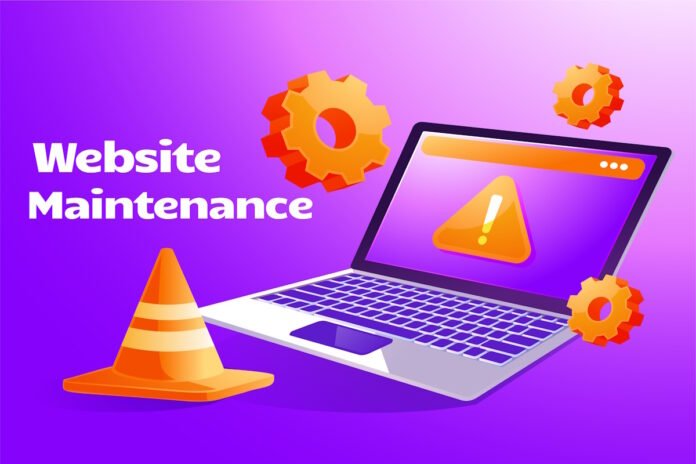In the digital era, maintaining a robust online presence is not an option but a necessity for businesses. Website Maintenance is a critical element in ensuring this presence is effective and efficient. It impacts business operations significantly, affecting everything from customer experience to brand reputation.
The Foundations of Website Maintenance
Website maintenance revolves around three primary components. Website Content Updates keep the site relevant and visitor-friendly. Software Updates and Security Patches ensure the website is secure from cyber threats. Lastly, Regular Backup and Recovery Procedures protect business data and provide contingency in case of unforeseen situations. These elements are essential to maintaining a high-performing and user-friendly website.
The Importance of Regular Site Auditing
In addition to the foundational components, regular site auditing is crucial for identifying areas that need improvement. This process involves conducting an SEO analysis to ensure the website ranks well in search engine results. It also includes a User Experience (UX) review to ensure the site is user-friendly, easy to navigate, and aesthetically pleasing. Regular audits help businesses stay ahead of their competition and provide a better experience for their website visitors.
Proactive Monitoring and Rapid Response
Proactive monitoring involves continuously monitoring the website’s performance, security, and functionality to catch any issues early on. This kind of monitoring allows for rapid response and mitigates any potential damage or downtime.
The Need for Professional Website Maintenance Services
While some businesses may have an internal IT team to handle website maintenance, it’s often more efficient and cost-effective to outsource these services to professionals. Professional website maintenance services have the expertise and resources to conduct regular audits, implement security measures, and provide rapid response in case of any issues.
Continuous Improvement for Long-Term Success
Website maintenance is not a one-time task but requires continuous improvement for long-term success. As technology evolves, websites need to adapt and improve their functionality, security, and user experience. Regular maintenance ensures that a website stays up-to-date with the latest trends and technologies, providing visitors with a seamless and enjoyable experience.
The Importance of Regular Site Auditing
Performing regular site audits is a crucial part of website maintenance. This process includes SEO Analysis to ensure the site ranks well on search engines, User Experience (UX) Review to guarantee an intuitive and enjoyable site navigation, and Performance Assessment to ensure the website loads quickly and performs well under various conditions.
- SEO Analysis: Regular site audits include an SEO analysis that checks whether the website follows best practices for search engine optimization. This helps the site maintain or improve its ranking in search engine results.
- User Experience (UX) Review: Part of the auditing process involves a UX review, which ensures the site offers intuitive navigation for visitors. It takes into account aspects like page layout, ease of access to information, and overall user-friendly design.
- Performance Assessment: This is a crucial part of the auditing process. It checks how quickly the site loads and how well it performs under varying conditions. This process often includes stress testing to check the site’s resilience and responsiveness.
Web Maintenance Impact on Business
Effective website maintenance services can revolutionize a business’s online performance. It can enhance the User Experience, improve Website Performance, and boost SEO Rankings, placing the business in a stronger competitive position.
- Enhanced User Experience: By regularly updating and maintaining a website, businesses can create a positive user experience that is easy to navigate and provides relevant information. This can increase customer satisfaction and make them more likely to engage with the site’s content, products, or services.
- Improved Website Performance: Regular maintenance ensures that websites load quickly and function smoothly, providing visitors with a seamless browsing experience. This is crucial as slow-loading pages or broken links can frustrate visitors and drive them away from the site.
- Boosted SEO Rankings: Search engines like Google prioritize websites that are regularly updated with fresh content and have an excellent user experience. By consistently maintaining and optimizing a website’s content, businesses can improve their search engine rankings and attract more organic traffic.
- Strengthened Competitive Position: In today’s digital landscape, businesses need to have a strong online presence to stay competitive. Regularly updating and maintaining a website not only enhances its performance but also keeps it relevant in the ever-changing digital world.
- Improved Security: Cybersecurity is a major concern for businesses, especially those that handle sensitive customer information. By regularly maintaining a website, businesses can ensure that all security patches and updates are applied promptly, reducing the risk of a data breach.
Dealing with Downtime
No website is immune to downtime. However, understanding the Costs of Website Downtime and having Proactive Monitoring and Rapid Response mechanisms in place can significantly reduce its impact.
- Regular Backups: Scheduling regular website backups is a fundamental step in dealing with downtime. It ensures that a recent version of your website can be restored quickly in case of severe issues or data loss.
- Monitoring Tools: Implementing robust website monitoring tools can help detect issues in real-time. These tools can provide alerts for performance slowdowns or site errors, enabling teams to address them before they escalate into significant downtime.
- Update and Patch Regularly: Keep your website updated with the latest patches and software versions. These updates often include fixes for bugs that might cause website downtime.
- Hosting Provider Support: Ensure that your hosting provider has a strong support system in place. They should be able to respond quickly and effectively when downtime occurs, helping you to get your website back online as soon as possible.
- Load Balancing: This technique can help manage heavy traffic and distribute it efficiently across servers, preventing overload on a single server that could lead to downtime.
Conclusion
It plays an integral role in business success, and neglecting it can lead to serious consequences. It is an investment that can yield significant returns in the form of an optimized, effective, and efficient online presence.
















